Verdict
An affordable handset offering a good main camera, strong battery life and a nice screen. It doesn’t come with 5G connectivity, and performance levels aren’t blistering, but it’s still a great-value buy.
Pros
- Great screen
- Excellent battery life
- Very good main camera
Cons
- No 5G
- Middling performance
-
108-megapixel main cameraThe lead camera sensor has a very high resolution -
5000mAh batteryThere’s a large battery capacity on board this phone -
90Hz Super AMOLED displayThe screen has a higher refresh rate than many at this price point, and is OLED rather than LCD
Introduction
The Realme 9 series now features more models than a glossy department store catalogue, with the Realme 9 5G, Realme 9i, Realme 9 Pro 5G, and Realme 9 Pro Plus all currently on the books – and who’s to say there won’t be new additions arriving at a later date?
This review concerns the titular model of the series, simply called the Realme 9. Despite all these variants sharing a similar name, their specifications are considerably different – and in this case they also happen to be considerably impressive. The Realme 9 leads with a 108-megapixel camera sensor, a 90Hz Super AMOLED screen, and a 5000mAh battery – all of which could be impressive coups for the low starting price of £249.
In this review, we’ll check out whether those elements come together satisfactorily for a must-buy package having used the handset as our main phone for over a week.
Design and Screen
- Lurid rear panel
- Good screen
The Realme 9 isn’t a shy, retiring handset; it wants you to know that it’s arrived on the scene.
My review handset was in the Sunburst Gold colour, and when it catches the light, it looks like a molten gold bar. It has a matte finish – rather than glossy – so it doesn’t shine brilliantly, but the texture delivers at least some protection from fingerprint smears (although it’s by no means completely immune). In my opinion, it’s quite flashy, to the point of being garish; but there are white and black options available, too, or you could just pop it in a case.
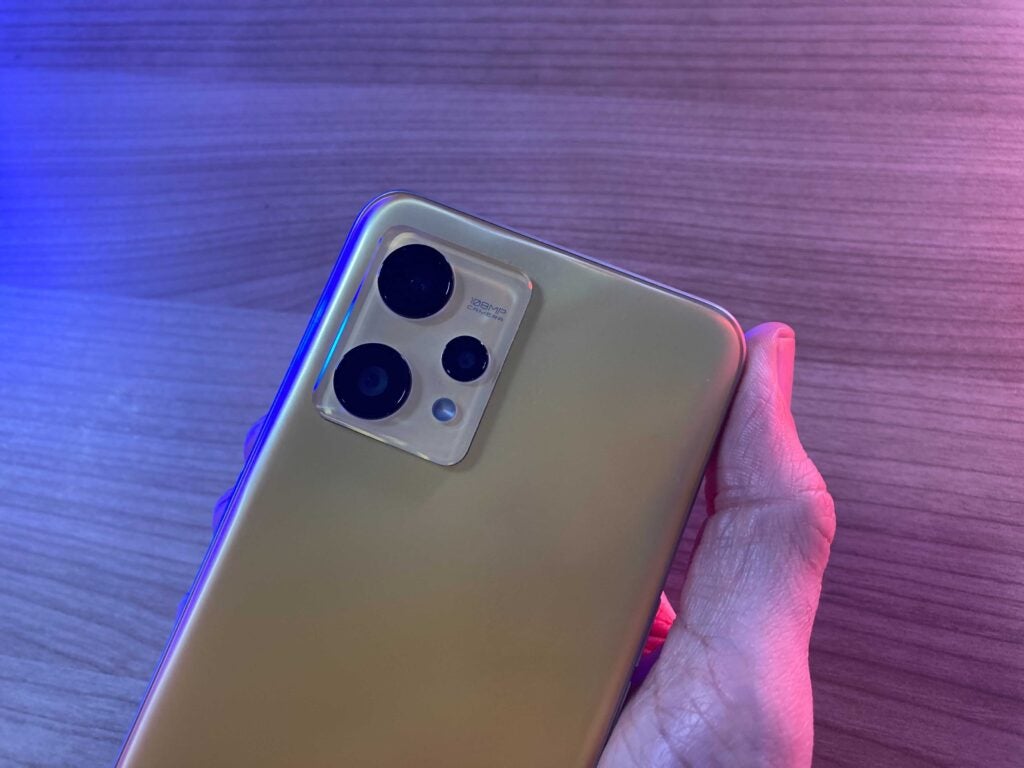
As for the practicalities, there’s a 3.5mm headphone jack here so you can use wired headphones, a USB-C port for charging and data transfer, and an SD card slot for expandable storage, should you want to improve on the 128GB that the handset comes with. Unfortunately, there’s no IP rating, so we’re not sure how it will handle splashes of water or being dunked in dirt.
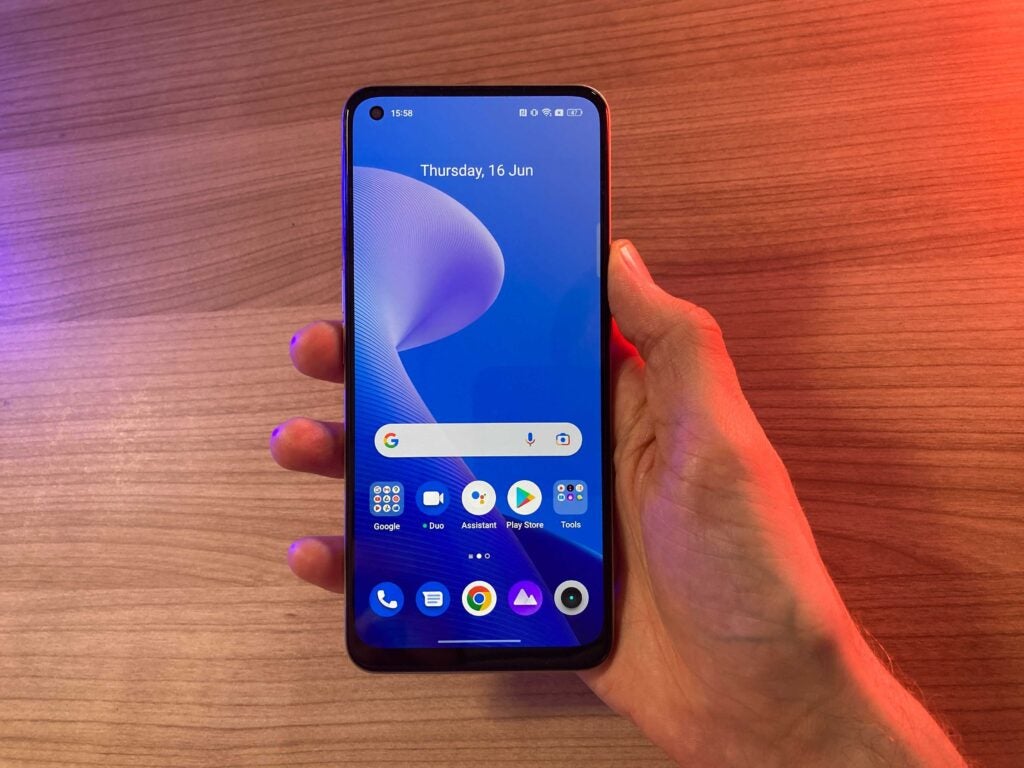
While the design isn’t particularly suited to my subjective tastes, I feel far more positively about the screen.
Not all handsets at this price have an OLED screen or an enhanced refresh rate, but this one has both. The former delivers excellent levels of contrast thanks to the display’s deep black shades, while the latter makes scrolling appear smoother when you’re using supported content.
The screen measures 6.4 inches all in all, which is quite large – although the device didn’t feel unwieldy in the hard, thanks in part to its lightweight construction, weighing in at just 178g. The display resolution is 1080 x 2400p, which is as sharp as you’ll find at this price, and in fact matches plenty of more expensive handsets. Another design flub is the screen’s relatively large “chin” (a larger bezel underneath the display), which is all the more surprising given the Realme 9’s lack of 5G connectivity, which sometimes necessitates such design compromises.
Camera
- Strong 108-megapixel lead sensor
- Ultra-wide and macro cameras also present
- Decent selfie camera
This smartphone’s key specification is undoubtedly its 108-megapixel camera sensor, which is an incredibly high resolution given the phone’s retail price. Habitually you’d expect to see this in handsets charging double the price or more, so we’re impressed to see it here. What’s more, it performs well, too – just take a look at the images below:



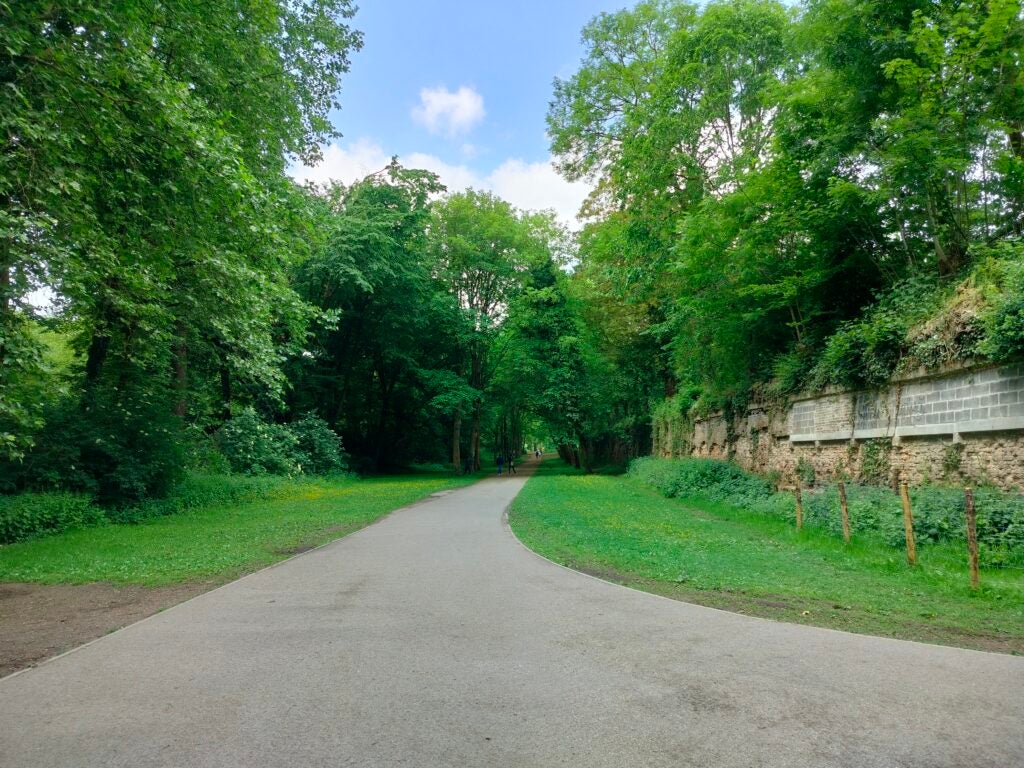
As you can see, detail is startlingly good in some shots. Overall, however, we were more satisfied with the quality of shots we captured with the Realme 9 Pro Plus, which offered even greater clarity.
Of course, the main camera isn’t the only sensor on the rear of this device; there are three in all, with the other two being a 2-megapixel macro camera and an 8-megapixel ultra-wide unit with a 120-degree field of view.

The macro camera isn’t good for much, but the ultra-wide was handy for those occasions I wanted to squeeze more into the frame, offering a whopping 120-degree field of view. The vista of Lille, above, was captured with the ultra-wide, while the same view was snapped by the main camera in the image below in order to showcase the difference.

As mentioned, it’s very helpful to have that extra perspective available with the ultra-wide, giving much-needed versatility to your camera – although, evidently, the shots aren’t quite to the same calibre as the main sensor, which delivered more realistic-looking results.
There’s no telephoto sensor here, so instead you’ll have to rely on the main camera’s digital zoom, for which there’s a default 3x option. From the same position, I took the following three images of the Porte de Paris using the ultra-wide, main camera, and 3x digital zoom, so that you can compare your shooting options.
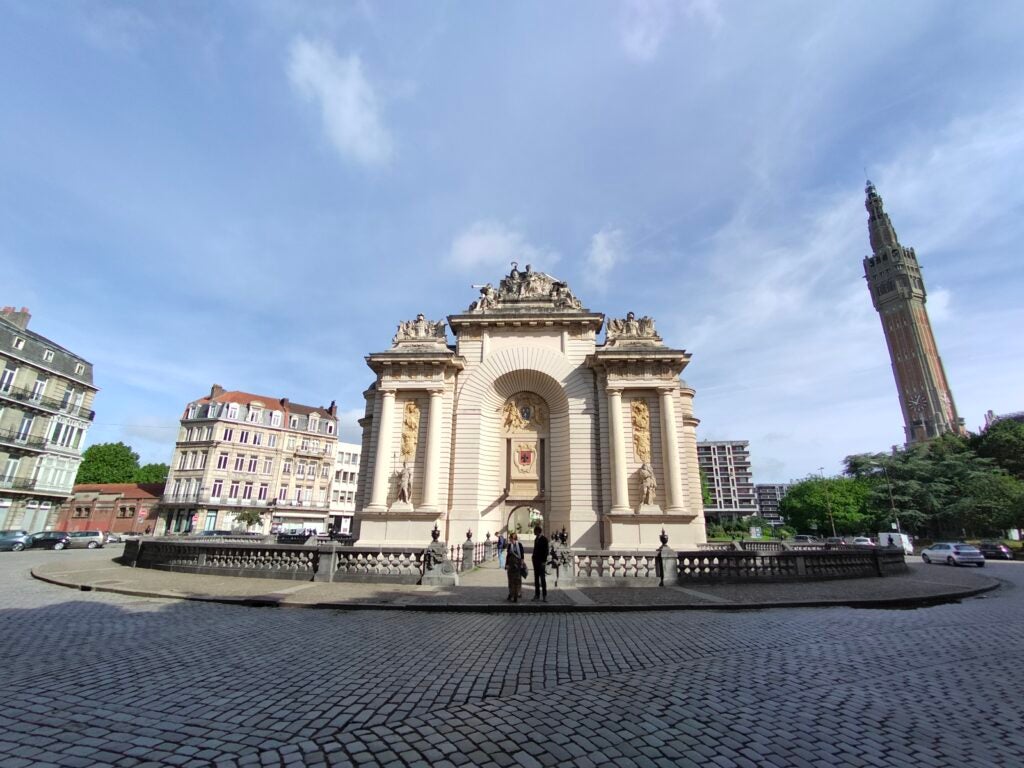


Once again, you’ll notice that the ultra-wide lens is a lot warmer than the main lens; but, additionally, you’ll see that an impressive level of detail is still retained at 3x digital zoom, meaning that it’s a genuinely viable option when you need to get closer to your subject.
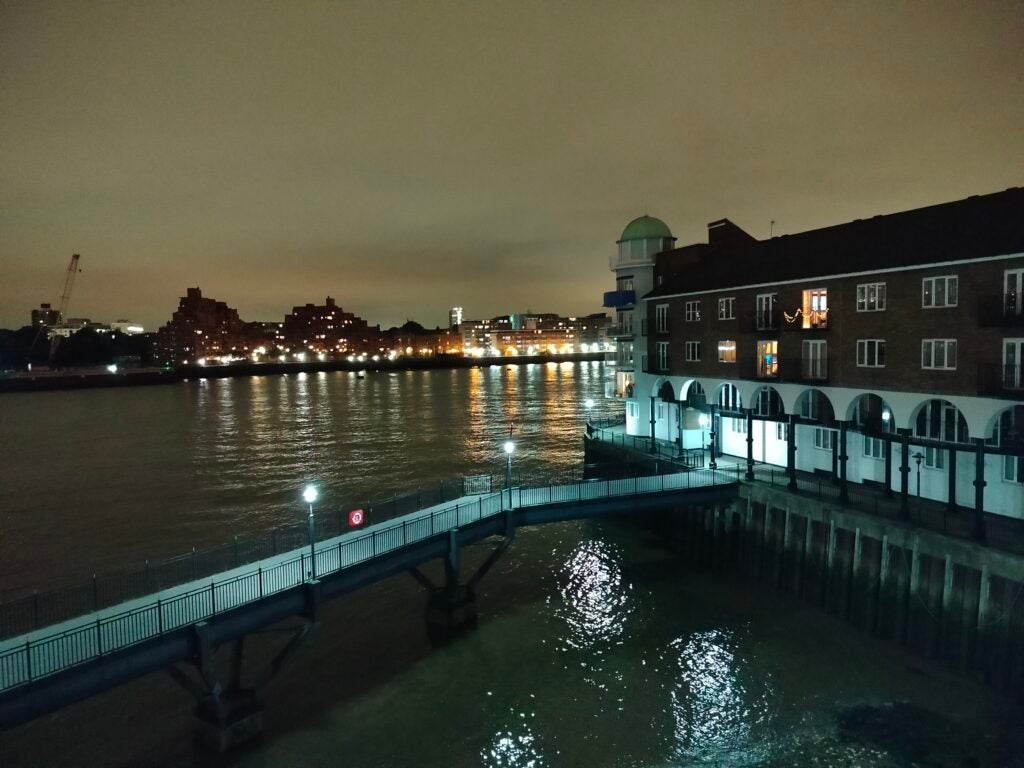
When you’re shooting in darker conditions, there’s a dedicated Night mode to help you get the best out of the camera. Above is the result with that mode isn’t applied, and you can see that the bright highlights from street lamps have been significantly blown out.
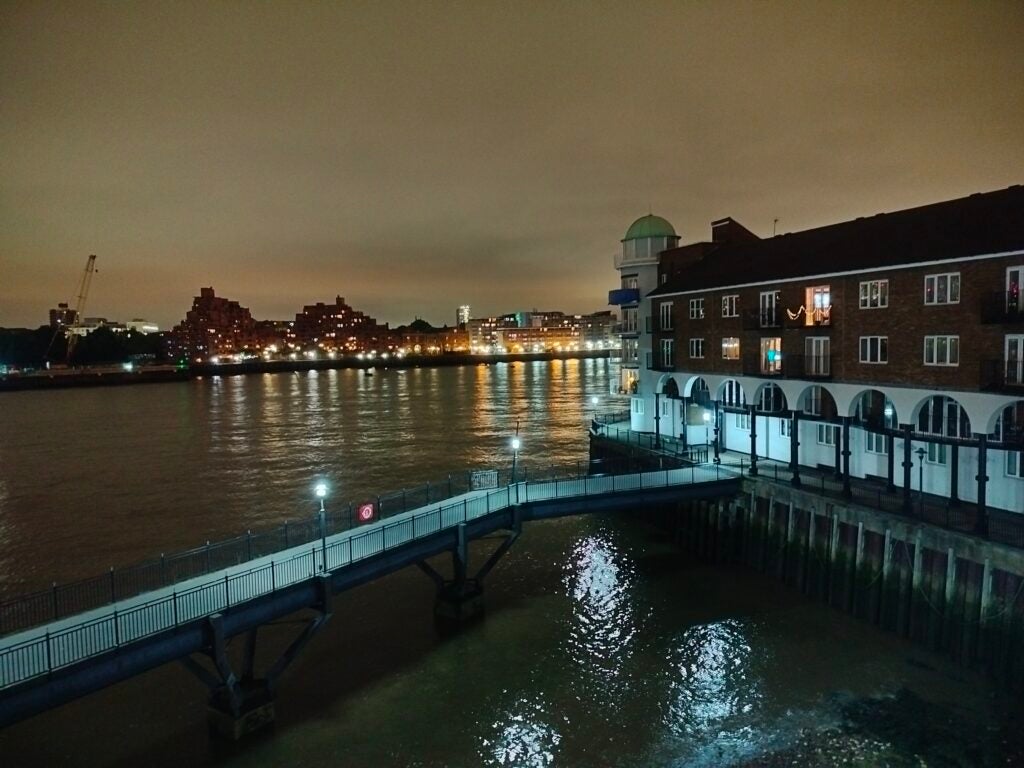
In the above image, where Night mode was applied, a decent amount of natural colour has been restored to the picture and the highlights have been toned down. The result is very far from perfect, and it wilts in comparison to excellent budget night-shooters such as the Pixel 4a. Nevertheless, at least it’s a smidgen tidier compared to the default settings.

Turning to the 16-megapixel selfie camera, you’ll find that results are fairly good, with detailed shots that do justice to difficult textures, such as skin and hair. However, the Portrait mode (below) isn’t as exacting as I’d like, with there being a blurry border around the subject’s face, rather than the clear distinction that really makes bokeh-effect images stand out.

Overall, its Pro Plus sibling might be a tad superior in this regard, but the Realme 9’s camera is still strong for the price and remains one of the key assets of this device.
Performance
- Snapdragon 680 chipset
- No 5G connectivity
The main compromise on the Realme 9, and the one that sets it aside from its sibling, the Realme 9 5G, is the lack of a 5G-supporting chipset. This handset has a lower-powered Snapdragon 680 processor, and its performance scores aren’t the highest among its peers.
In the table below, you’ll see that its CPU scores (measured by Geekbench) are unimpressive, while an even more significant gap opens up with regards to the GPU scores (measured by 3DMark). We can conclude that the Realme 9 isn’t the best device around for mobile gaming, and you should probably check out handsets such as the Poco X4 Pro 5G or, of course, the Realme 9 5G if you’re primarily looking for power at an appealing price.
Comparison tests are one thing, indicating a phone’s maximum capabilities, but how does the Realme 9 hold up when you’re actually using it on a day-to-day basis?
I found that the Realme 9 mostly ran smoothly, without noticeable problems when running demanding apps such as games. However, on occasion I did notice a slight hiccup when reopening apps or switching between apps that were running simultaneously.
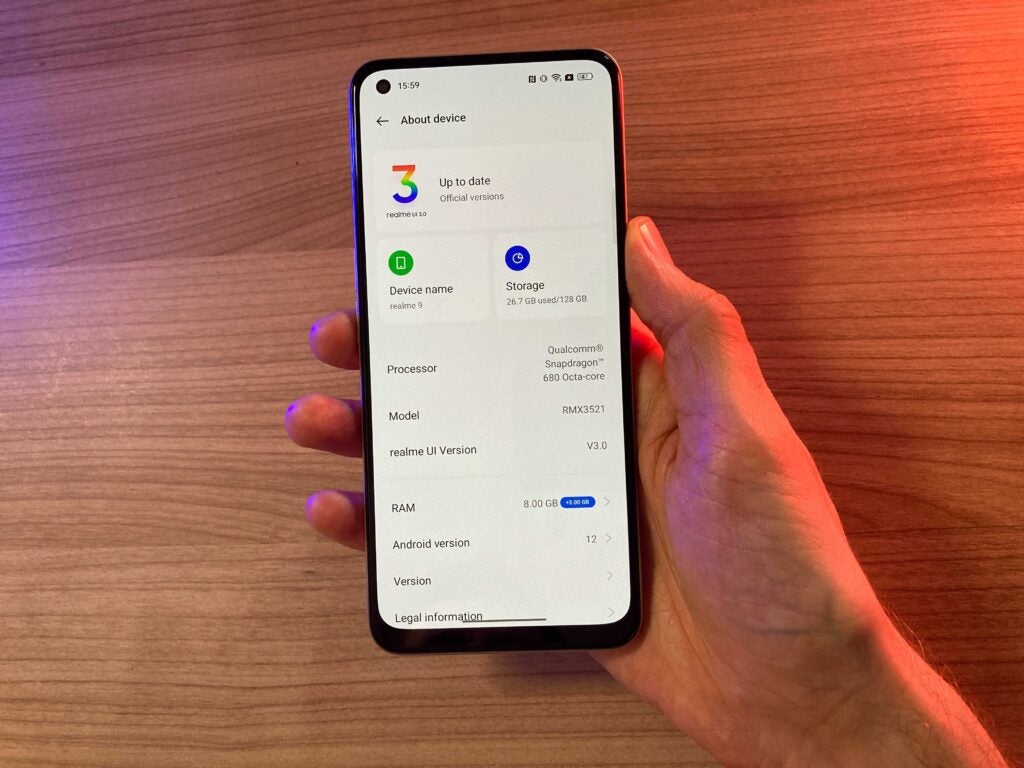
The Realme 9 runs on Android 12 software, and the custom skin is Realme UI 3.0. There are a few pre-installed apps here that you’re unlikely to use – I can’t honestly say that Tile Master 3D did anything but waste space as far as I was concerned, and the same goes for TikTok and Booking.com – but there are worse offenders where bloatware is concerned, most noticeably Xiaomi handsets running MIUI. In terms of useful tools, you’ll find there’s a sidebar here that you can access by swiping at the right of the screen, which provides easy access to the apps that you use most often.
Battery Life
- 5000mAh battery capacity
- Good endurance
- Decent fast-charging
The Realme 9 comes with a decent-sized battery, boasting the 5000mAh capacity that’s more or less the established industry benchmark at this point. Despite the fact that many devices offer a similar capacity, they can all still perform very differently depending on the demands of the screen and the efficiencies of the processor, among other things. Fortunately, I can report that this one holds up well.
Using my phone frequently during the course of the day – for browsing social media apps, watching YouTube videos, and occasionally taking some pictures – I always found myself with enough charge left at the end of the day (often more than 20%) to stop me from ever fretting about reaching a charging port in time.
To give a few real-world examples, I found that one hour of streaming Netflix set the Realme 9 back by just 5% of its battery; streaming Spotify for an hour consumed 2%, and playing half an hour of intensive games ate through 3% of the battery.
When it’s time to charge the phone back up ready for a new day, this handset supports 33W fast-charging for speedier topups. This doesn’t match the scorching speeds we’ve seen from some flagships, but it’s still impressive for a phone of this price. I found that charging speeds were very similar to those of the OnePlus Nord CE 2 Lite 5G, with a 50% charge taking 31 minutes and a full charge taking 1hr 14mins. It’s a weight off your mind to know that you can charge up your device fairly rapidly if you’re ever concerned about being caught short.
Not surprisingly, the Realme 9 doesn’t feature wireless charging.
Should you buy it?
If you’re looking for a cheap phone with a good camera, this is a great option During our tests the Realme 9’s camera easily matched, if not beat, more expensive handsets, with its ultra-wide in particular being best in class at this price.
If you want 5G connectivity or super-fast performance, then look elsewhere Although this handset ran fine for every day use, the phone struggled with demanding tasks such as gaming.
Final Thoughts
The Realme 9 delivers in many key areas, offering good photography results for the price, great battery life, and an excellent screen, too. That may well be enough to satisfy many potential buyers, but don’t ignore the downsides to this device. The first is the lack of 5G, and related to that, the handset’s generally underwhelming performance. What’s more, the design of this handset is also a bit on the lurid side.
Still, if you can live with these flaws (for instance, if you’re not a keen mobile gamer), and you’re short on bundles of cash to fling around, then this phone is certainly worthy of your consideration.
FAQs
No, there’s no stated IP rating, so we don’t know how the handset will deal with potential water or dust ingress.
No, the Realme 9 doesn’t have 5G connectivity
It’s available in Meteor Black, Sunburst Gold and Stargaze White.
Sustainability
TrustedReviews’ holds the fact that global warming is not a myth as a core value and will continuously endeavor to help protect our planet from harm in its business practices.
As part of this mission, whenever we review a product we send the company a series of questions to help us gauge and make transparent the impact the device has on the environment.
We currently haven’t received answers to the questions on this product, but will update this page the moment we do. You can see a detailed breakdown of the questions we ask and why in our sustainability info page.
Jargon buster
mAh
An abbreviation for milliampere-hour and a way to express the capacity of batteries, especially smaller ones in phones. In most cases the higher the mAh, the longer the battery will last but this isn’t always the case.
IP rating
An abbreviation for ‘Ingress Protection Code’, which lets you know to what extent a device might be waterproof or dustproof.
















